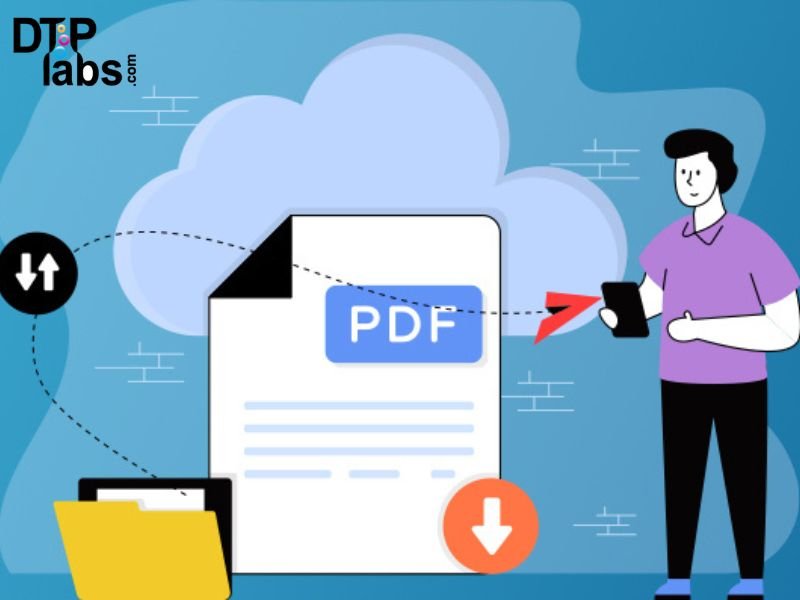What is PDF Accessibility?
PDF accessibility means that PDF documents are designed to be easily accessible and understandable for people with disabilities. This includes creating PDFs that are compatible with assistive technologies such as screen readers and make content accessible to visually impaired users. Important aspects include providing text content in place of scanned images, using alternative text for images, maintaining a logical reading order, and using headings and styles for document structure. included. The goal of PDF Accessibility is to ensure that information is equally accessible to all users, regardless of ability, by adhering to accessibility standards and guidelines.
PDF Decoding: Fundamentals of Portable Document Format
The acronym PDF stands for Portable Document Format. This is a file format created to encompass a variety of content in PDF format, including PDF elements in document formats such as:
- Text
- Images
- Embedded fonts
- Hyperlinks
PDF is designed to maintain a consistent and universal layout across different devices. This means that it maintains the same appearance regardless of the software, operating system, or hardware used to access it.
The flexibility of PDFs has spurred the creation of various types, such as those conforming to ISO standards and others tailored to specific content and usage scenarios.
Why Use PDF Files?
PDF files (Portable Document Format) are widely used for a variety of reasons, thanks to their unique combination of features:
Universal Compatibility: PDFs can be opened and viewed on virtually any device with a free PDF reader, making them a reliable format for sharing documents across different platforms and operating systems.
Preserved Formatting: Unlike some file formats that can alter layouts during transfer, PDFs maintain the exact formatting and layout you created, ensuring your document looks exactly as intended on any device.
Compressed and Manageable: While PDFs can hold complex elements like images and fonts, they can also be compressed to keep file sizes manageable, making them easier to store and share electronically.
Security Features: PDFs offer built-in security features like password protection and encryption, which can be crucial for protecting sensitive information.
Searchable Content: PDFs can be created with searchable text layers, allowing users to find specific information within the document using search functions easily.
Rich Media Integration: Modern PDFs can incorporate multimedia elements like videos and sound clips, enhancing the document’s interactivity and information delivery.
Other Accessible Document Characteristics
- We don’t rely solely on color or sensory properties to convey meaning.
- audio control
- Use text instead of text images
- Avoid flashing or flashing elements
- Focus will not change without user interaction
- Consistent navigation and item identification
- Settings and commands to optimize the output of assistive technology software and devices, including B. Save as accessible text for Braille printers
- Settings and commands to make navigation within PDF more accessible. For example Example: Automatic scrolling and opening a PDF to the last page read
- Accessibility settings wizard to easily configure most accessibility-related settings
- Keyboard instead of mouse operation
- Reflow feature that temporarily displays text in a PDF file in one easy-to-read column
- Converting text to speech
- Screen reader and screen magnifier support
Features that support creating accessible PDFs
- Create a tagged PDF from your authoring application
- Convert untagged PDF to tagged PDF from within Acrobat
- Security settings that allow screen readers to access text while preventing users from copying, printing, editing, or extracting it
- Tools for creating accessible PDF forms
- Ability to set document properties such as title and display them through the application’s title bar
Why Choose DTP Labs?
DTP Labs stands out for its exceptional PDF to DOC conversion, multilingual desktop publishing, and e-learning localization services. With a strong focus on quality and efficiency, DTPLabs ensures timely delivery and cost-effective solutions for clients worldwide.
Their team of experts provides customized DTP Labs and also offers comprehensive PDF accessibility and proofing services to ensure your documents meet 508 PDF compliance and WCAG 2D-2G standards services tailored to meet specific project requirements, guaranteeing high-quality results. The company’s commitment to customer satisfaction, combined with its extensive experience and expertise, makes DTP Labs the preferred choice for businesses seeking reliable and professional localization services.
Summary
We’ve covered a lot, from understanding the basics of PDF to understanding its specifications and standards. You learned how to open, edit, create, convert, protect, and optimize PDF files. Armed with this knowledge, you can better harness the power of this versatile file format. As we’ve seen, PDF is more than just a document viewer. These are powerful tools in our digital toolbox. So the next time you open a PDF file, remember that you’re not just viewing a document, you’re interacting with technology that has revolutionized how information is shared and presented. To avail of our services, check out our website www.dtplabs.com, or contact us at info@dtplabs.com.

